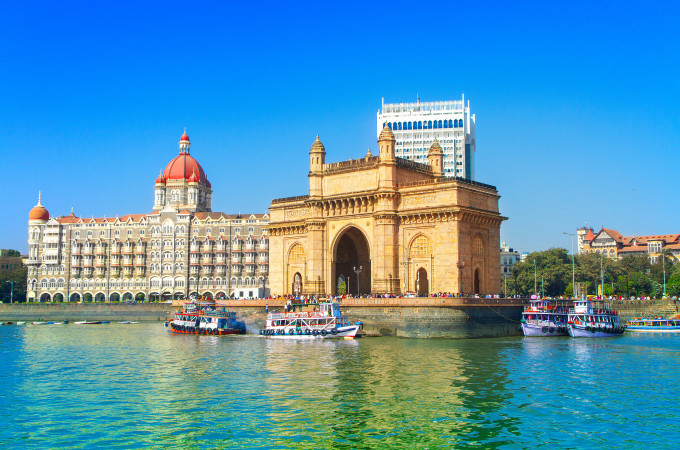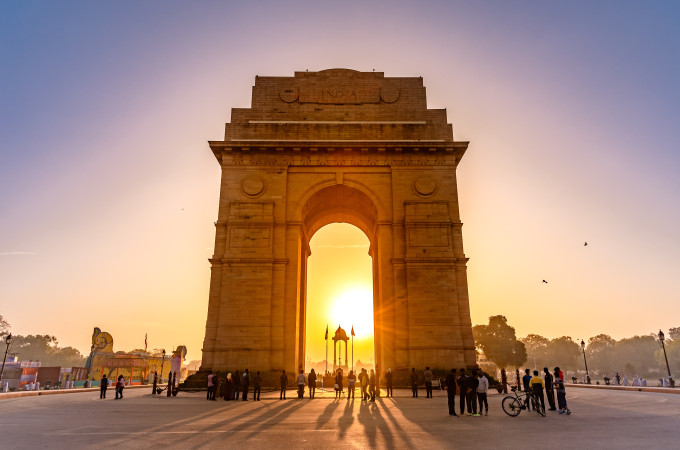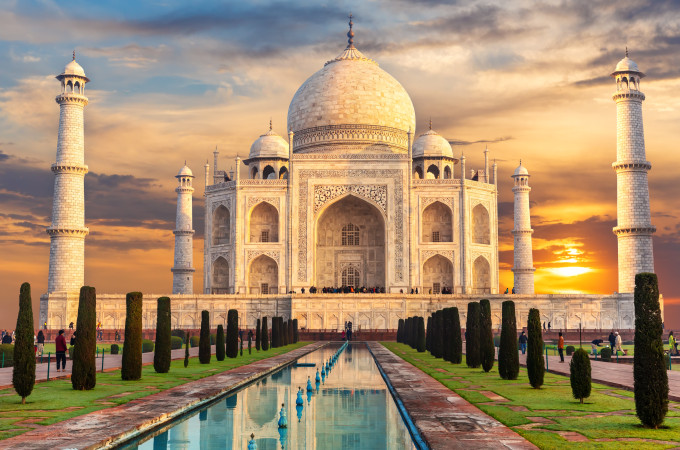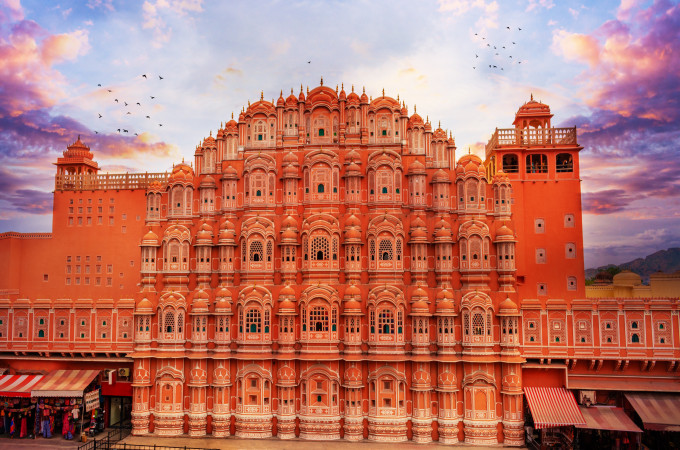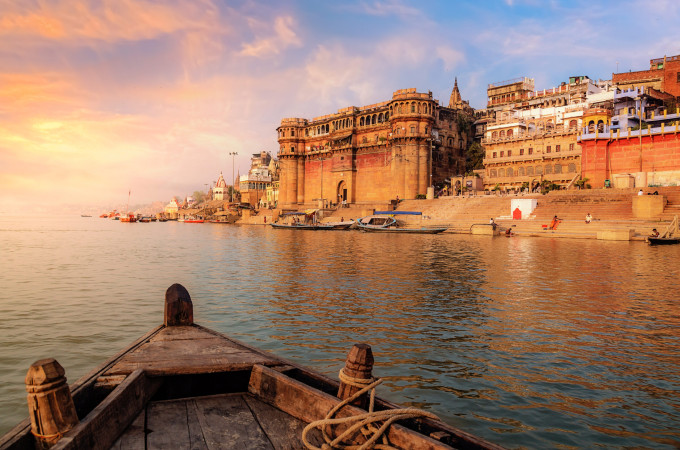Frequently Ask Questions
Useful Information About Travelling In India
If you are travelling to India for the first time, then chances are you might be slightly anxious and looking for answers to some perplexing questions about this magnificent country.
Fret not, this brief but useful guide is for you.
We delve into the basics of travelling in India, the things to keep in mind, and what you should expect when you are in India.
We break it down for you into concise useful tips about Food, Visa, Tipping, Travel (Train and Road), Dressing, and general safety precautions. For each category, we attempt answer the Frequently Asked Questions about travelling in India.
Do’s Of Travelling In India
Food
Ah, the delicious mouth-watering Indian food!
Food is usually one of the first things you worry about when you travel. In India, the problem is not a lack of food options, but rather an over-abundance of them. It leaves you spoiled for choice, and sometimes, quite confused to make informed choices.
On account of its cultural exchange via the ancient Silk Roads with the Eurasian Super Continent (that stretches from the steppes of Central Asia to Persia and the Middle East), North Indian cuisine is a fusion of influences from all of these regions.
The cuisine of the coastal South Indian region bears influences from the region’s cultural and trade ties with maritime regions of South East Asia, the Gulf and the larger Indian Ocean region.
That is why you find lots of Kebab, Pulao, Tikka and Naan dishes and curries in North India, and spicy rice and lentil-based aromatic dishes like Dosas, Idli and Uttapams in South India.
So now when you move from North India to South India, or vice versa, and encounter a subtle transformation in the culinary landscape, know that it is not just geography, climate and topography at play, but also thousands of years of civilizational exchange.
Also, not all of India is vegetarian. Contrary to popular belief, only about 25-30% of Indians are strictly vegetarian. So, everywhere you go in India, you will get ample veg as well as non-vegs options.
If you are looking for the familiarity of fast-food ‘back home,’ all major cities and towns have global fast-food chains like Mcdonald’s and KFCs. But then again, you will be missing out on the culinary adventures that India offers.
Now let us look at some useful tips about food in India
- Prefer freshly-prepared food at good quality restaurants. Looking up reviews and ratings of the restaurant online before selecting a place to eat. Ask a local or your hotel staff.
- When you are new to India, go easy on the spices and street food. Give your digestive system a few days to adjust to Indian conditions before you up the ante. We recommend that you try out only one Indian meal during the day in your first week. Almost all good quality restaurants have multi-cuisine mild options like a club sandwich. (Remember: start slow in India!)
- Avoid unhygienic food stalls. But if you do want to try out street food, wait until you have got the hang of things in India. Ask locals about the best street food stalls. They are usually the ones that have the longest queues and serve fresh food.
- Always drink bottled water. Avoid fresh fruit drinks as the water used to wash the fruits or make your drinks may be contaminated.
For more clarity about food in India, check out our comprehensive page on EATING IN INDIA here.
Visa
You are required to have a valid visa before you travel to India which must be obtained in advance (via an Indian embassy, consulate or online).
Visa requirements vary for different countries, so before you book your ticket, make sure to look up visa requirements for your country.
India now offers Electronic Visas for many countries of the world. For further information, please consult this official link of the Indian Government: https://indianvisaonline.gov.in/evisa/tvoa.html:
The process is quite user-friendly and hassle free. All you have to do is complete the visa application form online, and submit a passport-sized photo and pictures of your passport or any other document that is required.
Tipping in India
Tipping is quite common in the tourism and hospitality sectors in India. It is, however, not compulsory. If you are happy with the service that has been provided to you, then a decent tip is a way of showing appreciation and goes a long way toward helping low-end service providers make ends meet.
Typically, you are expected to tip service providers like drivers, porters, waiters and guides. There is no need to be over-generous but also, do not cheap out! Find a sweet spot.
As a general rule of them, a tip should range from 5-10% of the total amount that you have been billed. Let’s say your bill at a restaurant amounted to 100 rupees, then anything between 5-10 rupees is considered a good tip. Likewise for a taxi ride.
At hotels, here is a reasonable breakdown of how much you should tip.
Housekeeping: 10-20 INR
Porters/Luggage Attendants: 20 INR
Receptionist: 20-25 INR
Valets: 20 INR
For more clarity, check out our page TIPPING IN INDIA here. It covers all that there is to know about tipping in India.
Clothing
India is no Totalitarian Theocracy. You can dress the way you want but some caveats apply.
India is still a very conservative and traditional society. Major metropolitan cities tend to be more cosmopolitan and modern, and you can dress the way you would in the West, but if you venture out into smaller towns and rural heartlands, it is better to respect local sensibility, dress modestly and cover your body.
Likewise, if your itineraries include heritage or cultural tours to places of religious and spiritual significance like Temples, Mosques, and Gurudwaras, be sure to wear full-length pants/trousers and a longish shirt that covers your upper body, and take off your shoes when you enter the premises.
Indian winters are mild, so you do not have to layer up. Temperatures tend to drop slightly during day time, but when the sun is out during day time, it is not very chilly. A light sweater with a pair of jeans and a shirt would do.
In summer months (April to September), wear relaxing loose fitted cotton and linen clothes that are breathable and allow for the circulation of air. Use a cap or scarf to keep your head protected from extreme sunlight and use sunscreen.
For more details, check out our page WHAT TO WEAR IN INDIA here.
Train Travel in India
With 23 million rides daily (that’s more than the total population of Australia alone!), the Indian Railway is a veritable miracle. The largest carrier in the world!
A journey on a train in India is a journey through the heart and soul of India. It takes you to the heart of the matter and bares India’s soul to you. You get to see all colors and hues of India on the Indian train.
The Indian train experience, though, doesn’t have to be a crowded and cramped affair. With improvements in infrastructure, the introduction of new modern lines and trains, the Indian train service has come a long way.
Now you can travel all across India in world-class trains that provide state-of-the-art luxury and comfort.
For further details, check out our page TRAIN JOURNEY IN INDIA that covers everything you need to know.
Here are a few useful trips.
- Prefer booking train tickets through your tour operator. Be aware that during peak tourist months (October-March), good quality trains between popular destinations like Delhi, Agra, Rajasthan, etc are booked weeks in advance.
- Avoid the slow-moving local and regional trains. Prefer to travel by modern inter-region EXPRESS train services like Duranto, Golden Chariot, Tejas, Gatimaan and Shatabdi. These have high quality First class, Executive (EA) and AC Classes that are cozy, spacious and comfortable for long rides.
- Do not accept food or drinks from strangers. Carry your own bottle of water.
- Never leave your luggage or valuables unattended.
The Best Time to Travel In India
The peak tourist season (high season) is from October to March. The weather is perfect for outdoor travel. The rains tend to stay away and the sunshine is just pure delight.
The low season in the tourism calendar lasts from April to September. This is a time of high temperatures (up to 40 °C/104 °F, high humidity and torrential monsoon rains.
But it is the cheapest time to travel in India and also the best time of the year for wildlife safaris and tiger spottings as the animal tend to congregate around water holes and reservoirs, so you know where to find them.
TimeZone in India
India has only one standard timezone (the Indian Standard Time or IST). It is GMT+05:30 Hours. (GMT = Greenwich Mean Time).
Voltage in India
India uses 220 volts, which is the same as the UK, Australia and Europe but different from the 110-120 volt used in the US.
How Kids Friendly is India ?
India is a very children-friendly destination. Tens of thousands of families with kid travel to India. With tremendous food, excellent luxury resorts, exciting wildlife safari escapades and excellent opportunities for cultural exchanges and learning, India is the perfect destination for travelling with your family.
For more details check out our page IS INDIA SAFE TO TRAVEL WITH KIDS here.
Cash , Credit Card & Debit Card in India
Major currencies like (Dollars, Pounds and Euros) can be easily exchanged at international airports and currency exchange outlets. Some hotels always have authorized currency exchange licenses or they can arrange currency exchange for you if asked.
ATM Cards can be used at all banks. Credit and Debit cards like (Visa, Masters, etc) are readily accepted in shopping malls, retail outlets and restaurants in major cities in India. Be sure to inform your bank before travelling to India, so they won’t block your transaction.
However, in small towns and rural areas, cash is still king. Make sure you carry cash on you when you venture outside of major urban centers.
Are You Offering Tours For Single Travelers?
Yes, we do!
India is a great destination for solo travel and the trend is catching on.
Can I Get A Tailor-Made Itinerary For Travelling In India?
Absolutely!
We offer tailor-made itineraries that are catered to individual needs, styles and preferences. Itineraries listed on our website are also helpful samples to help you curate your own bespoke experiences.
If you need certain adjustments and additions to our listed itineraries, feel free to contact us. We will be happy to help you.
 Skip to main content
Skip to footer
Skip to main content
Skip to footer
